|
Imagine you’re listening to the audio recording of a book. Suddenly, the speed slows way down, and what normally would take two hours now takes one week, or even one month. You’d still hear something, but it would be a very low hum and you can’t understand the words any more. The meaning of the book is lost. That’s how I as a lay person experience the rock formations, mesas, canyons, and mountains all around me here in northern New Mexico – I certainly appreciate the beauty of the colored layers, the different rock textures, the shapes that can look so other-worldly, but questions such as WHY? HOW? WHEN? remain a mystery. I see a still-photo of a long movie, but it is static. Because I have no understanding of geologic time. Our resident geologist Kirt Kempter compared it to money, when I talked to him recently. When we think of billionaires, most of us can’t really conceive what this entails, it just sounds crazy: one thousand times one million. Geologic time is similar. “When you study geology, once you get your geology degree from college, you know almost nothing”, Kirt explained. “You get introduced to all these various sub-fields: paleontology, geochemistry, geophysics, a bit of historical geology. But it’s not until you start your professional career in geology when you think about this geologic time on a daily basis. You look at the landscape and you see surfaces or geologic events that happened in the past few thousand years. And then you see canyons in New Mexico where the capping lava is a million years old, and here you have this 600 foot deep canyon, for example, along the Rio Chama or the Rio Grande, and you learn that this particular kind of erosion can occur within this particular span of geologic time. So, you’re constantly thinking of these millions of years in the geologic past, and at last, as you deepen into your profession, you feel that you have a good concept, a good grasp of these millions of years. I’m not actually sure that it’s true, but you feel comfortable speaking in this deep-time language”. I was curious: how does one become a geologist? Did he collect rocks as a little kid? Kirt grew up in Albuquerque, and his parents were musicians. They were 100% city-slickers, they were afraid of nature, and they almost never went camping, Kirt explained. “But my friends and I were always going out into vacant lots, catching snakes, catching lizards. I had a whole slew of reptile and amphibian pets, I even had a pet racoon for a while. I was always driven to the outdoors naturally, to my parents’ incomprehension. When I was in Junior High I saw a flyer on the campus of UNM: an ad-hoc group wanted to hike down into the Grand Canyon and raft down the river. This was in 1974, before rafting became popular. I think it was kind of a premonition of me becoming a geologist. I begged my parents to let me go on my own with this group, I didn’t know anybody, I was 14 years old and they let me hike down the Grand Canyon, 18 miles to the river”. He never had Earth Science at school, and it wasn’t until he was a biology major in college that he took Introductory Geology for fun in his junior year. And it ticked off all the things he enjoyed: having a profession where one could be outdoors most of the time; it included biology, the study of paleontology, life on our planet and how it evolved. He changed his major immediately after that class. It was one of those moments in life where one takes a turn and it changes everything after that. “My Bachelor’s was from Colorado College in Colorado Springs, but my Master’s and PhD were from the University of Texas at Austin. Both projects were studying big volcanoes in Latin America. My Master’s thesis was in the Sierra Madre Mountains of Mexico, studying a giant caldera, twice as big as the Valles Caldera, and my PhD project was studying an active volcano in Costa Rica, and this, what I call a “young” volcano, was growing inside a much bigger caldera, also bigger than the Valles Caldera”. I live in Coyote, and all along the roads one can find agates and other rocks that apparently stem from the big “SuperVolcano” eruption at Valles Caldera. I asked Kirt to tell me more about that. “Yes, the pyroclastic flow from Valles Caldera went as far as Coyote. There were two giant eruptions in the Jemez Mountains. The first one was 1.6 million years ago, which made the caldera we call the Toledo Caldera. Then, 350,000 years later, the Valles Caldera forms in the same place, with the same volume of magma, the same chemistry of magma; the exact same eruption happened 350,000 years apart. The Valles eruption started off as a single vent that was really powerful going up tens of kilometers into the stratosphere, but then it transitioned into multiple vents tapping into the magma chamber. These multiple vents were not as energetic as the single vent, so these multiple eruption columns were going up maybe five kilometers high, and collapsing, and sending out pyroclastic flows. These are turbulent clouds of hot gasses, magma particles, and rock fragments that can flow across the landscape at speeds of one hundred, even two hundred miles per hour. And the topography of the surrounding area of the eruption vents dictated where those pyroclastic flows went. So for those of us in the Rio Chama Valley, in the Abiquiu area, there were high topographic features like Chicoma Peak, Polvadera Peak, and a high plateau called the La Grulla Plateau. These highlands kind of blocked the pyroclastic flows. But then there were low areas to the north and to the northwest towards Coyote. That's where the pyroclastic flows were able to flow for many kilometers, probably 20 kilometers away. So yeah, if you had been in the Coyote area 1.2 5 million years ago, you wouldn't have survived!” “What's neat though about these pyroclastic flows, there were previous canyons like Cañones Creek and the one in Youngsville, the Rio Puerco. There were already canyons that existed before the eruption. And these canyons filled up with the pyroclastic flows. Once they had solidified, they became what we call the Upper Bandelier Tuff. And what’s so amazing is these giant eruptions transform the typography in the blink of an eye. They fill up canyons, and so they totally can change where rivers once flowed. New rivers have to form afterwards. I love catastrophism in geology! Certainly, these big volcanic eruptions, like the Valles, are catastrophic and change the landscape in just a few days. We're not looking at geologic time, we're looking at hours and days that totally changed the landscape story”. This reminded me of the little earthquake we had in this area last year. Was this related to the volcanic activity at Valles Caldera? Kirt had a surprising explanation: “You live in a transition zone between the Rio Grande Rift, which is the Española Valley that's to the east of you, and the Colorado Plateau, which is all the land to the west of you. So we have this geologic boundary, the Colorado Plateau to the west, the Rio Grande Rift to the east. The Colorado Plateau is trying to pull away from the rest of New Mexico. And as it is doing that, we have this tear in the crust in New Mexico called the Rio Grande Rift. Along the rift boundaries, the basins keep dropping down over time, filling up with sediments and volcanic deposits. And so, since you live in that transition zone between the Colorado Plateau and Rio Grande Rift, we get more earthquakes there, based on this pulling apart of New Mexico”. “In general, when the crust is pulling apart, this results in smaller earthquakes. When you have geologic boundaries, like the San Andreas Fault in California where there's a lot of compression and stress, you tend to get the bigger earthquakes. The rocks in geologic zones on either side of a fault experience compression and there's a lot of friction. Stress and strain keep building up until finally it has to release in a big earthquake. When the crust is just pulling apart, then you always have these little earthquakes. So we don't tend to get the big magnitude-seven earthquakes. Now, I say that we don't tend to, but that's not to say it's impossible”. I had no idea that there were two different kinds of earthquakes. Having experienced the San Francisco earthquake of 1989 I feel a sense of relief. Kirt has led many tours both for the Smithsonian Institution and for National Geographic Expeditions. I asked him how this came about? It kind of fell into his lap, Kirt tells me. In 1993, when he was working on his PhD and studying a volcano in Costa Rica, one of his committee members was a volcanologist at the Smithsonian, Bill Nelson. Smithsonian was starting one of their educational tours to Costa Rica and they asked Dr. Nelson if he could lead the tour. He was too busy, but he recommended Kirt. So Kirt led his first tour in 1993 to Costa Rica, and because it went really well they asked him to do a few more. At first he would just do a couple of tours a year, but then they started giving him more tours, even to places he didn’t know. In 1995 they were starting a tour to Iceland and asked if he could manage although he had never been there. And it went well. “So then they started letting me go anywhere. I started doing tours to Patagonia, and just all over – to places where the landscape was the focal point of the tour. I found that I could lead tours to places I’d never been because you're basically teaching introductory geology to lay people as you travel. So, if we're going to Iceland, for example, I need to teach the basics about volcanoes. Also, teach basic plate tectonics and glaciology. So, more than half of the teaching on these tours is basic geology so that people can understand these geologic processes that are forming the landscape”. “For 25 years, I would do these educational tours all over. National Geographic had a big educational tour program. For about 20-some years I did, on average, eight international tours a year. And it was great. I loved it. But I've retired from doing those big trips now. However, I had told National Geographic that if they ever do a tour to the Kimberley region of Australia, I would be back in. Well, they did call me up about a month ago and told me that they have a tour to the Kimberley! So I have agreed to do one more tour next year. It includes Northwest Australia and some of the islands of Indonesia”. I asked Kirt to talk a bit about Iceland. He had been there several times. “Yeah, Iceland is unique on our planet. There are frequent eruptions, about one every four years somewhere in Iceland. And what makes Iceland particularly interesting is the last two million years – which means young geologic time. Most of those eruptions have happened underneath ice. You get very, very odd volcanoes when you're forming a volcano underneath an ice sheet. You get these very different types of eruptions and shapes of volcanoes. The combination of fire and ice is young geology, we find really, really young geology in Iceland. And I love that”. What’s another favorite spot on Earth? “In South America I love Patagonia, and in particular, one part called Torres del Paine. I've probably done a dozen tours to Patagonia which is part of Chile, and it's just gorgeous. It's like South America's Yellowstone. There’s lots and lots of wildlife – guanacos, camels, pumas, rheas which are ostrich-like birds, and the condors”. Wait a minute. Did you say camels? In South America? “Yes, there's a whole branch of camels that evolved in North America and that went extinct in the Ice Age, but they migrated into South America. So when you think of llamas, they are part of the guanacos of South America. There's a whole family of camels that evolved in North and South America”. “Sometimes geology can bring continents together, and the different flora and fauna can mix. And sometimes geology can separate landmasses. And then very different animals and plants evolve if we have a geologic separation or barrier. So yeah, that is the camel story of South America. It is really interesting because it relates to North and South America, joining together through the Panama Isthmus. That land bridge connection where Panama is today is a young connection between North and South America”. I’m surprised again. “You mean it came out of the ocean?” “Yes. If we go back in time five million years ago, there was still an ocean connection between the Pacific and the Atlantic, through southern Central America. But when all these volcanoes started to come up above sea level, they got bigger and joined together. Eventually they formed a land bridge connecting North and South America that for the first time allowed animals to migrate from south to north and vice versa. If you see an armadillo or a possum in North America, they walked up from South America” This is so fascinating, and again, I had no idea! We were reaching the end of our interview, and I wanted to know what Kirt was up to these days. He had said earlier that he wasn’t doing long educational tours any more, but still offered day tours out of Santa Fe. What else is he involved with these days? Since 2000, Kirt’s career has involved making geological maps. Funded mostly through the US Geological Survey, that’s how he came to know the Abiquiu area so well, starting in the Jemez Mountains, moving down to the Rio Chama Valley, then moving north to El Rito, eventually to Las Tablas and Tres Piedras. Falling in love with the landscape has helped with the many years of making geological maps.
“When I’m hiking I’m trying to read the rocks and read the landscape. This adds a deeper dimension to my aesthetic appreciation. Trying to understand what all those rocks tell you – how can there have been an ocean here? Sand dunes? A river the size of the Mississippi? It’s mind boggling, but those are the environments of northern New Mexico at different times in the past. As a teacher, I enjoy taking people – non-geologists – on these trips, and I try to paint the picture that I see in my mind, from the story that I’m reading.” This was a most fascinating conversation, and I thank Kirt for taking the time to share this wonderful information with us. I felt I was looking through 3-D glasses while I was listening, whereas normally all I see is a two-dimensional image. If you want to see more of his photographs, you can visit GeoMosaics.
8 Comments
Brian Bondy
If you are an Indiana Jones fan, then this last one is worth watching. Not only does it feature the Antikythera Mechanism, but Marion does make a brief appearance, and she is always a pleasure. Back in the 90’s I first learned about this device, found in 1901 off Greece by some sponge divers, along an ancient wreck. There was a lot found, and at the time, the lump of rust was not that interesting. Later, upon closer examination, it was found to be nothing less than history changing. If you have seen the Indiana Jones movie, then you know all about it. Just kidding. The movie doesn’t begin to tell how astonishing it is, but it does make it a lot of fun. Back in the early 90’s when I read an article about it, it was not yet known what it was. With more than 30 precision gears, there was some thought that it may have been a clock of some sort. The mechanism was dated to about 150 BC to 100 BC. Since the first mechanical clocks are generally attributed to Germany in the late 13th century, that makes the Antikythera Mechanism about 1400 years ahead of its time. If you are familiar with the non-Shakespeare phrase, “Give me a lever long enough and a fulcrum on which to place it, and I shall move the world”, then you know Archimedes was a pretty smart guy. While that would be a huge understatement, he is the one that gets attributed to designing, if not building, the Antikythera Mechanism. Unlike the movie, the mechanism is basically a rusty pile of gears and housing. Using CT X-rays, however, a great deal was learned. It turns out that the device is a very complex Horary, an Astrological clock. It predicts eclipses, the passage of celestial bodies through the sky, and other things. It is still being examined and deciphered. As a big computer geek, I’m facinated by the construction of what can be considered a hand cranked computer. See the movie if you like that sort of thing. If you want to learn more, then check out some of the links below. A 7 minute Youtube Video: Antikythera Mechanism: The ancient 'computer' that simply shouldn't exist - BBC REEL
A fairly recent article: https://greekreporter.com/2022/09/15/antikythera-mechanism-secret/
A brief article about the first mechanical clocks: https://museum.seiko.co.jp/en/knowledge/MechanicalTimepieces01/ By Jessica Rath When you have an out-of-state guest during the summer weeks and want to offer something special, take your visitor to a performance at the Santa Fe Opera. One doesn’t have to be an opera aficionado to enjoy such an evening – there is much more besides the music to make this an unforgettable event. Take the setting for example – there are hardly any walls! Given the fact that the opera is built on a hill just north of Santa Fe, this means that the surrounding mesas and mountains are visible, and truly eye-catching sunsets over the Jemez Mountains are almost a given. The wind can add some dramatic effects, seemingly being in synchronicity with the events taking place on the stage. And while you can expect world-renowned performances, you can dress as casually or elegantly as you like: shorts and sneakers, jeans and sweatshirts are more common than formal evening wear, and anything in between goes. Since the venue is outdoors and Santa Fe nights can get quite chilly even in summer, staying warm and comfortable has priority over fashion statements. This unique opera setting was the brainchild of a unique person, the opera’s founding general director and conductor John Crosby. He launched the company in 1956 and remained its director for 44 years, until his retirement in 2000. His vision was to create a summer festival which would present five operas: two popular works such as Puccini’s Madame Butterfly (which was chosen as the inaugural performance to open the first season in 1957), and the other three would be more experimental pieces: rarely staged and lesser known operas, as well as American and world premieres. This programming turned out to be highly successful ever since its inception. Next to Madame Butterfly, 1957 also featured Stravinsky’s The Rake’s Progress, with the composer present for two weeks. Each following summer, through 1963, Stravinsky returned to the Santa Fe Opera –the collaboration was beneficial for both. Another innovative idea which was initiated by Crosby and continues today is the Apprentice System. For the 2023 season, the company selected a group of 44 young singers from more than 1,000 applicants. They get the chance to sing in the chorus of each opera, perform in Apprentice Scenes on two Sunday evenings in August, prepare as understudies for some leading roles, and participate in seminars and master classes. This program was the first of its kind in the United States and has produced a large number of professional performers with distinguished careers. The Opera House didn’t always look the way it does now. The original theater, the location of the first performance of Madame Butterfly on July 3, 1957, was completely open-air and could seat only 480 people. The audience sat on benches and often got soaking wet because of the frequent summer rains. However, this wouldn’t deter the die-hard opera enthusiasts! On July 27, 1967, a fire started around 3:30 am and completely destroyed the opera building. In less than a year, John Crosby managed to raise enough money to rebuild the theater in time for the next season which opened on June 28, 1968 with – you guessed it – Puccini’s Madame Butterfly. The new building had a greater seating capacity for almost 1900 people and was exposed to wind and rain, as the earlier one. At the end of the 1997 opera season, extensive reconstruction added a distinctive roof which provided more protection and increased the theater’s seating capacity to around 2,200, among other changes. In July of 1998 a new season opened in the new theater with Madame Butterfly. Here is an article with photos of the destroyed 1967 theater and the newly built successor. And here you’ll find a number of photos from the 1957 building. My daughter who lives near Boston, MA came for a short visit and we decided to watch Rusalka, an opera written in 1901 by the Czech composer Antonín Dvořák, and a local premiere. I knew it was loosely based on Hans Christian Anderson’s fairy tale The Little Mermaid, which I loved as a kid. But there are some significant differences. “Rusalka” is a female spirit from Slavic folklore which is associated with water, and can be benevolent but also dangerous and seductive. The Rusalka in Dvořák’s opera is a water nymph who has fallen in love with a young prince who often visits the lake where she lives. He cannot see her, and she longs to become human and visible. Her father tries to dissuade her, but when she won’t listen, he directs her to the witch Ježibaba who will help her – but it’ll cost her dearly. She will lose her voice. And if the Prince rejects her, she will be forever cursed and outcast, and he will be condemned to eternal damnation. But she accepts everything and turns into a lovely young woman whose beauty enchants the Prince. He takes her to his castle and plans to marry her. But he soon loses interest. And the staff in the castle think Rusalka bewitched the Prince and make fun of her. A Foreign Princess shows up and tries to seduce the Prince who pushes Rusalka away. She is now an outcast and asks Ježibaba for help again. If she kills the Prince with a knife, then she can save herself – that is Ježibaba’s offer. But Rusalka can’t do this and throws the knife away. The Prince, who is now ill with remorse, goes to the lake, looking for Rusalka. She has her voice back and tells him that because of his rejection, she is now a spirit and her kiss will kill him. But he begs her for it, to bring him peace. She embraces him, and forgives him as he dies, asking for mercy for his soul. It is a very sad story. Unlike The Little Mermaid fairy tale which has a more redemptive ending (which is, however, not the Happy End of the Disney version), Rusalka paints a bleak picture of human relationships and points out the fickleness of “eternal love”. The Santa Fe production under the direction of Sir David Pountney sets the stage in a psychiatric hospital in Vienna, which suggests Freudian subconscious struggles and underscores the pitfalls and misunderstandings which can trip up lovers and couples. Maybe there is redemption at the end – Rusalka’s final song may suggest this. A special treat was the female conductor, Lydia Yankovskaya, who is the music director of the Chicago Opera Theater. I looked it up – only 13% of all conductors in the United States are women. Brava!
By Tamra Testerman
It’s an eclectic lineup – Indy pop, Rock, Chillwave, and World - infused folk music at the Ghost Ranch Music Festival this weekend — Blossoms and Bones is a two-day celebration of all things Georgia O’Keeffe, the woman who inspired generations of artists to be fiercely independent, loyal to the vision, and ever restless. I am resilient I trust the movement I negate the chaos Uplift the negative I’ll show up at the table Again and again and again, I’ll close my mouth and learn to listen These times are poignant The winds have shifted It’s all we can do To stay uplifted. Rising Appalachia
Sisters Leah Song and Chloe Smith, known as Rising Appalachia, have carved a musical career influenced by their southern roots and world travels. Atlanta, New Orleans, their Irish ancestry and the southern Blue Ridge Mountains of Appalachia are the emotional sound palette that influenced their music. Unwavering, no compromising, activists, and truth-seekers, the sisters have birthed their own je ne sais quoi weaving vintage jazz, global influences, folk, bluegrass, spoken word, and hip-hop. I spoke with Song by phone outside of Asheville preparing for the trip west. Smith couldn’t join us, she’s on“the schedule of the baby” (new mother) "which rules."
The sisters were raised in a family of artists. “Our father is a prolific painter and sculptor. He used to say ‘you are a creator because you cannot imagine being alive without it, I make art not because I want to but because I have to, to get through the day.’ If it’s in your bloodline, then you cannot escape it. It’s in your cooking, it’s in the way you put on your shoes in the morning. And so we grew up with a lot of different visual arts references and a big Georgia O’Keeffe book prominent in our family home. So we knew her, her work, just the beauty of her paintings and the incredible, stunning and stark imagery of herself in all the portraits that were taken of her – She seemed stoic and like a pretty serious, bad ass.” Holding the lines of tradition, yet ever evolving is the bedrock of Rising Appalachia. “I feel like we’ve always wanted to hold a foundation of traditional folk music—out of the South, which is the region of our upbringing, but also a lot of traditional music at large. So we’ve been students of traditional songs and traditional instrumental projects since we were kids. We grew up with an Appalachian and Irish folk playing family. But we grew up in the middle of downtown Atlanta, Georgia so the neo soul movement influenced our lives as well. – And contemporary folk cultures, which was the underground hip hop movement. Front porch storytelling, Contemporary music of the people, the music of the streets. And so all of that is already an unusual melting pot –I think continued from the foundations of this music tradition and wrote our own, to collect ways where we can write contemporary songs and merge them with old traditional fiddle tunes or old traditional ballads we’ve brought in the incredible musicianship of traditional Irish and West African players into our project who play the music of their origins. It’s the same. It’s been, like you said, kind of ever evolving. A study of the intersection between traditional folk music and contemporary songwriting.” Song and Smith have spent the last couple of years getting closer to their Irish lineage. "We have a lot of Irish on both sides of our family. There’s a lot of intact folk culture in Ireland, which I think is the benefit of it. The arts in Ireland reflect the hardship in its history, and the people's survival has helped preserve much of the culture intact. You can still find it. 10, 15 generation ballad singers and the tradition of the wailing the songs that held the grief. There’s a boat building culture. The sound of fabric being washed on the rocks that’s integrated as a rhythm and percussion into some songs – you don’t even have to imagine it. You can still kind of catch glimpses of it in the living, which is a wonderful, wonderful feeling. We all have access to that in our lineages and in our ancestry. Some of us are closer and some have to dig further. But, you get that texture still in the traditional Irish folk music. A lot of those songs and tunes have been circulating in the public domain for hundreds of years. So they don’t have authorship. Much of the music that we grew up in, being sung and played by groups of people. passed down in the oral folk tradition for hundreds and hundreds of years. We’ve studied singing styles from hill country in Bulgaria and ballad singing from rural Ireland and discovered places with music that has carried that on for generations. And that’s a real big inspiration for us. We look forward to sharing our musical journey, seeing other musicians, immersing in the ancient and dramatic landscape of Georgia O'Keeffe, and meeting the people at Ghost Ranch.
Blossoms and Bones showcases a “progressive female-centric artist lineup in honor of O’Keeffe’s legacy as a leading female voice in American Art, but features male artists as well.
Friday, August 25 music starts at 5:00 p.m. and features Taos’ Natural Lite, folk duo Ocie Elliott, New Zealand rockers, The Beths, Alt Rock Legends, the Breeders with headliner the Indie Pop darling, Japanese Breakfast. Saturday, August 24 music begins at 4:30 p.m. with Native singer-songwriter Raye Zaragoza, world-infused folk with Rising Appalachia, Chillwave pioneer Toro Y Moi, Grammy award nominees for Best New Artist, Yola, and headlining is Austin Texas Indie Rockers, Spoon. Friday and Saturday nights feature after-show DJ sets with New Mexico’s own DJ and the art collective Team Everything. Two-day and single-day passes are available with extras like camping, glamping and VIP deck, special meals, and more.There will be a special welcome night “campfire” concert on Thursday. For details about the artists visit the website https://ghostranchmusicfest.com/artists/ and to purchase tickets https://ghostranchmusicfest.com/tickets/ Photographs of Rising Appalachia by Melisa Cardona courtesy the artists All others artist courtesy Ghost Ranch Music Festival Blossom and Bones. By Jessica Rath Once Rio Arriba’s busiest hub, now at the bottom of a lake. Ever since I learned that Abiquiú Lake’s water level was so high because El Vado Lake was being drained, I was curious – might there be some visible ruins? Some remnants of human habitation? You may remember that I had spoken with John Mueller, Operations Manager at the Abiquiu Dam, who had explained that in addition to the snow melt our lake received all the water from El Vado Lake because the dam was in need of repair. He also told me that the name of the lake came from a town that used to be there. WHAT? A town? Under water? I decided to drive up there and look for old ruins. And research the town’s history. Surprisingly, it wasn’t easy to find any records and/or photos of El Vado. Maybe this is because the town lasted for little more than 25 years. Two booming industries complemented each other in northern New Mexico from the end of the 19th century into the early 20th century: the logging business and an ever-expanding railroad network. The trains needed lumber for railroad ties and bridges; the coal mines that provided fuel for the trains needed props; and in exchange, the railroads transported tree logs to and from the lumber mills. People could find steady work, and enterprising capitalists could make a fortune. By 1910 El Vado had become the largest town in Rio Arriba County with over 1,000 residents; a number of sawmills had sprung up, and the Denver and Rio Grande Railroad stopped in El Vado to ship timber to many locations (I learned this from an article in the Rio Grande Sun, published just about ten years ago). The McPhee & McGinnity Lumber Company of Colorado operated a large lumber mill in El Vado which in 1917 was damaged by fire; a notice in the Morning Journal of Durango/Colorado reported that El Vado had been destroyed in a forest fire and that McPhee & McGinnity had lost their lumber mill and other buildings. The next day the paper corrected its news and stated that only a lumber kiln had been destroyed by fire, but the town and the lumber mill were unharmed. Clearly, the value of the McPhee & McGinnity company was of utmost importance. The indiscriminate logging which also included old growth Ponderosa Pines 150 feet high and four feet in diameter soon decimated the forests that had covered the whole area around El Vado. By the mid 1920s almost all the trees had been cut down and the logging business moved to a different location. When construction for the El Vado Dam began in 1933, fewer than 100 people still lived in the area, and by the time the dam was completed in 1935 the town was deserted. Which means that water has covered all the buildings, houses, railroad tracks, roads, bridges – whatever was there – for nearly ninety years. Would anything be visible, given that most of what we can see in the photographs above was made out of wood and possibly some adobe, neither of which would last very long, being submerged in water all this time? Although I couldn’t even establish whether El Vado Lake had been drained 100% or whether it was still half-full, in which case one wouldn’t be able to see anything anyway, I was too curious and had to find out. I motivated my friend Peter, who also lives in Coyote, to accompany me for the long ride and possible adventure, and we set off early on a Thursday morning. We drove north on US 84 towards Tierra Amarilla, and then we turned left on NM 112 which took us to the El Vado Dam and to the El Vado Lake State Park. We reached a boat ramp which was closed for obvious reasons; we could see the Rio Chama and established that the lake had indeed been emptied. But how to get to possible ruins? Luckily, the State Park Ranger Station was nearby, and we decided to stop there for some directions. They were closed, but a friendly ranger came out anyway to help us. Without her, we would never have found out where to go! The thing was to reach the peninsula (which we didn’t know anything about), and to do that, we had to drive back all the way to US 84, go a bit further north, and then turn at NM 95 to go to Heron Lake, pass the Stone House Lodge, and then turn left at the Peninsula Drive. There’s a peninsula – we had no idea. It goes about two miles straight south and from the southern tip one can see the dam. The Chama flows to the east of the peninsula, and the town of El Vado was probably on the west side. “It’s steep to go down”, the ranger had warned us, and she was right. It was too steep for me, I was only wearing sneakers and it was too hot. Peter did make it down after we had driven back up for about one mile, but he checked out the side near the Chama, and he found nothing – that’s what the lady had told us to do, but I think she made a mistake. We explored the other side, the area west of the peninsula, and it looks more likely that that’s where the town of El Vado was situated. If you look at the first image at the top, the one with the lumber mill, you notice a little bridge in the foreground. In the image above, you see a small creek, a tributary to the Chama – that could be what the little wooden foot bridge spans. The photograph was taken from a position not much higher than the front of the bridge and with a wide-angle lens; that’s why figures and items in the distance look further away than they probably were. The second image must have been taken from the opposite direction, looking towards the peninsula. One can see the same smokestacks, and possibly the smoke from a locomotive. We did find the old cemetery which of course never was under water, that’s why the wooden cross and the fence posts etc. are still there. I don’t know why I thought we could find old ruins, when wood and adobe clearly wouldn’t last long being submerged for nearly 90 years. To find the metal remnants which must still be there, railroad ties, plates, and other rusty left-overs, one has to hike down the steep slope – wear adequate shoes, possibly bring a hiking pole, and plenty of water. And binoculars would help, too. We’re planning to do this again, soon. The beauty of the area made the long trip worth it anyways, even without anything resembling Stonehenge or the Colosseum in Rome. If you have some other ideas about the location of the town – I know I’m merely speculating – please leave a comment!
By Jake Arnold
The cases alleging perjury in grand jury testimony by Rio Arriba County Commission Chair Alex Naranjo and former County Manger Tomas Campos are on a procedural hold with District Judge Jason Lidyard recusing himself from presiding over either of them. With that action by Lidyard, the cases will now be assigned to one or a series of other First Judicial District judges. According to prior experience such matters involving prosecution of public officials, criminal cases brought them against them most often lead to a series of additional recusals (excusals by either defendants or prosecutors) until one of the other First District Judges ends up with the case. Each side has the option to exercise a one-time excusal of a judge ultimately assigned to a criminal case. In recusing himself from the Naranjo and Campos perjury cases on July 24, 2023, Lidyard did not disclose why he chose to do so. He simply stated, via standard court recusal form, that he had "good reason" to do so, without mentioning any specific details. Consequently, as a result of Lidyard's recusal and the expected sequential process of multiple, pro forma assignments to a series of other First District judges, further procedural actions in these cases are on hold. Until another judge does ultimately take these cases, no arraignments/first appearances can be set, no summons for the defendants to appear at such hearings can be issued, and no defense attorneys can enter their notices of appearance on behalf of the defendants. Also, on Thursday 7/27/23, upon receiving notice of Lidyard's recusals, the clerk of the First Judicial District Court re-assigned the Naranjo case to District Judge Mary Marlowe Sommer and re-assigned the Campos case to District Judge Glenn Ellington. Campos did tell the Santa Fe New Mexican newspaper that he is represented by top notch criminal defense attorney Tom Clark in this matter, but Clark had not submitted a notice of appearance on Campos' behalf as of 7/26/23; presumably because the procedural states of these cases are in limbo for the immediate future. Naranjo did not publicly identify, in his comments to that newspaper, any attorney who may be representing him in his companion case. But on Thursday, 7/27/23, attorney Elden Pennington did file an entry of appearance on Naranjo's behalf. But Clark has not yet filed an actual entry of appearance on behalf of Campos. The tortured history of the legal proceedings leading to the indictments against Naranjo and Campos goes back to June, 2019, when longtime political activist Antonio ("Ikie") DeVargas of La Madera submitted a petition submitted to Lidyard, signed by several hundred Rio Arriba County residents, seeking to have Lidyard convene a special grand jury to investigate alleged wrongdoing (criminal or simply malfeasance in nature) on the part of the North Central Solid Waste Authority, that governmental agency's employees and/or board members . Naranjo, as a county commissioner, was formerly and is now once again, a NCSWA board member. Campos, as a former county manager, was once a NCSWA board member. The NCSWA owes its existence to a joint powers agreement executed by Rio Arriba county, the City of Espanola and other units of local government including two Native American pueblos. Pursuant to that agreement, representatives of those entities sit on the NCSWA board. However, shortly after the emergence of the of the Covid pandemic, the state Supreme Court suspended all state grand jury proceedings until the pandemic no longer made such proceedings impossible to continue. Finally, in early 2023, grand jury proceedings could once again resume and Lidyard issued an order to convene a special grand jury in response to the 2019 DeVargas-initiated petition. Any such grand jury proceeding requires the involvement of a state prosecutorial agency (local District Attorney's Office or the state Attorney' General's office). As it so happened, the First Judicial District Attorney's Office prosecutors attempted to scuttle the convening of a NCSWA special grand jury by Lidyard and a procedural battle between DeVargas, his attorney Richard Rosenstock and Lidyard transpired. The DA's prosecutors argued that a 2022 state Supreme Court ruling severely limited the functions of grand juries and the ability of prosecutors to use grand juries as a vehicle to bringing cases against targets. Lidyard rejected that move by prosecutors since the 2022 state Supreme Court order in question applied solely to "regular" grand juries and not to "special" grand juries convened on the basis of a citizen petitions, as authorized by the state constitution. Therefore, a NCSWA special grand jury sought by DeVargas and his co-petitioners was eligible for him to convene. Lidyard did convene this special NCSWA grand jury and its proceedings commenced on April 24, 2023. That grand jury, as do all other state grand juries, had a legal term of 90 days during which it could deliberate, hear/see evidence and choose to indict (or not indict) "targets" or witnesses who may have perjured themselves when testifying before it. The term of this special grand jury expired on July 22, 2023. Three days earlier, on 7/19/23, the grand jury handed up indictments against Naranjo and Campos for perjury to Lidyard. The indictments state that Campos perjured himself in grand jury witness testimony on May 31, 2023, and that Naranjo perjured himself in grand jury witness testimony on June 28, 2023. In their respective grand jury witness testimonies, both Naranjo and Campos claimed they were completely unaware of allegations or reports of any NCSWA wrongdoing discussed at board meetings when they were members of that board. The indictments state that the conclusions of perjury for both defendants were based not on testimony of other witnesses, but on a documentary record that included minutes of NSCWA board meetings in which both Naranjo and Campos participated. Those minutes (included as exhibits in the report) demonstrate that both defendants were acutely aware of NCSWA wrongdoing/likely criminal conduct by NCSWA employees/officials. Based on those indictments, Lidyard, the following day (7/20/23), initiated fourth degree felony criminal cases for perjury against both Naranjo and Campos. The next day (7/21/23) the special NCSWA grand jury submitted a 22-page report on its deliberations, recommended actions by the court/prosecutors, indictments requested, and as a series of findings pertinent to the history of the NCSWA over the past decade since its creation. It is unclear if all or portions of this report was the work of grand jury members, the prosecutors from the DA’s Office, or both. The report is highly critical of the DA's Office, claiming that the DA's prosecutors effectively tried to stonewall the grand jury when it sought assistance or evidence from that agency. The report reveals what may be a hostile relationship from time to time between the grand jury and the prosecutors. So, while Lidyard has the report in hand and did initiate the actual criminal cases against Naranjo and Campos, he is now out of the picture and the expected series of recusals and likely excusals of the other First Judicial District judges is now underway--a process that could last for an indefinite time period. In one curious and mistaken understanding of what is legally possible regarding action against other NCSWA figures that appear in the report (certainly composed by grand jury members rather than the prosecutors) the report recommends "indictments" against those other NCSWA figures for "malfeasance." No crime of "malfeasance" is included in any New Mexico criminal statutes. Whomever composed that portion of the report's text may have been confused about a different, and extremely rare procedure that can be initiated by a special grand jury in conjunction with the prosecutor assisting a special grand jury and the district judge supervising its proceedings. This unusual procedure allows for a finding of "malfeasance" or dereliction of duty in the conduct (or lack thereof) on the part of a currently sitting elected official--a county commissioner for example. Key to this provision is that the targeted individual must be an elected official and the articulated finding of malfeasance must be related to/be in progress during that official's current term of office. This procedure cannot apply to non-elected officials, onetime officials no longer holding office, and cannot apply to misconduct during an elected official's previous term(s) in office. If this unusual procedure were to come before the supervising district judge, he/she could suspend that elected official from office pending a civil trial to resolve the recommended removal from office for malfeasance. That trial would proceed as a civil case, but the rules governing its adjudication would follow the rules of criminal procedure. The targeted elected official would then be subject to a ruling of removal by the district judge, or conversely, the judge could issue an effective "acquittal" and the targeted elected official could resume his/her term in office. None of the individuals identified in the special grand jury report are erroneously recommended for "indictment" or "malfeasance" could be subject of this arcane provision of the statues. Only one of them (from a total of six altogether) was an elected official--a former Rio Arriba County commissioner who is longer holding elective office. The other five are/were NCSWA employees/board members but are not/were not elected officials. Another intriguing aspect of the special grand jury report is that the members of this body "recommended" an indictment against three individuals. The grand jury did just hand up indictments against two of them, Naranjo and Campos, but did not do so in the instance of the third individual that this special grand jury sought to see prosecuted, former Espanola City Council John Ricci (no longer holding elective office), who was once a NCSWA board member. It is not clear if the decision not to proceed with an indictment against Ricci, when the special grand jury handed up indictments against Naranjo and Campos on 7/19/23, was that of the DA's prosecutors or a decision by the grand jury members having reconsidered their initial recommendation as stated in their report. Both special grand jury members and/or the DA's prosecutors could have composed different portions of this report. ~By Jessica Rath How many times have you seen a tree that was struck by lightning and caused a fairly substantial wildfire? THE tree that started it all? Well, I had to become 77 years old before I could cross this item off my bucket list (I’m joking, I don’t have one). And not only that, I got to meet the person who first discovered the fire! On July 6 I joined a field trip organized by the El Rito Ranger Station of the Carson National Forest, to look at the Comanche and Midnight Fires and see the fire effects of a few weeks and a year later. I didn’t go to the Midnight Fire site because it would have become too long of a day for me, but I want to share what I learned during the first part of the trip. It certainly was fascinating, given the fact that wildfires are normally (and rightly) seen as something to be feared. But they also have beneficial effects, something I had never really considered before. About 20 participants, maybe a few more, gathered in the parking lot of the Carson Forest Ranger Station at 9:30 in the morning. Angie Krall, the West Zone District Manager, showed us on a map where we would go and told us what would happen during the day. First, we would visit a Type Four level active Fire Incident: the site of the Comanche Fire. Fire officials decided to contain the wildfire and allow it to burn at a low intensity. They established boundaries and consulted resource advisers. The fire started between El Rito and Canjilon, and crews have been using a “confine and contain strategy” which means they allowed the fire to work its natural role in the ecosystem. We took Forest Road 137 to drive to the burn site. As we passed the area of the 2005 Pine Canyon Fire on our right, we saw the skeletons of burned trees. In some places the 2005 fire made space – which is one of the goals of prescribed burns. We passed ponderosa, pinyon, and mixed conifers, the typical vegetation of the region. A prescribed burn, the Stone Angel Project, is being planned just west of El Rito in the next few years. We noticed that the left side of the road looked very different from the right side; while the left side was overgrown with shrubs, saplings, and scrub oak, on the right side the fire had thinned out the vegetation. For our first break we parked somewhere near the fire, and Tommy Peters, the Incident Commander Type 4 trainee, gave us an overview of the Comanche Fire history. On June 8, lightning struck near the El Rito/Canjilon border and caused the fire. The fire and fuels team from the West Zone of the Carson, together with a resource specialist, looked at it, and they formed a strategy for a fire-planning area. On June 12, the fire crews and teams got together, and they created a plan to contain the fire for an area of up to 10,000 acres.The purpose was to reduce future risk to natural resources and communities. On June 21 a drone and a helicopter ignited several spots from the air. In May and early June we had a lot of moisture, but then the rest of June became dry and windy, which wasn’t the desirable weather for the plan. They started with low intensity fire which later turned into more intensity than desired. At that point ignitions ceased. The latest Forest Service update says the fire activity is minimal and the crews will work only to cool any possible hotspots. From the start of the fire until the day of our field trip, 1974 acres were burned, a number which has a good landscape effect. There were less than two acres of high intensity effects, exactly what the planners wanted to see: lots of small pockets of fire; a mosaic. On the day of our visit several engines were still there to monitor and control the line. The day before, on July 5, the temperature was high and it was windy, but there were no great reactions. There’s a slurry line for the safety of firefighters and natural resources. Tommy stressed that firefighter- and public safety always come first and are the most important concern. So far, the Ranger Station is delighted with the results. The resource advisors say that everything of value will be considered. Last year’s Hermit's Peak/Calf Canyon Fire, two escaped prescribed burns, became New Mexico’s largest and most destructive wildfire ever. As a result, several new policies have been implemented. There’s much more community input. For the Comanche Fire more resources have been added, there were press releases, two community meetings, and daily updates. Procedures are more transparent and monitoring is more robust. Prescribed burns had come under attack because of the devastating destruction last year’s fire had caused. People were angry because the fire could have been prevented. They concluded that there are too many unknown variables to conduct safe prescribed burns. While this is an understandable reaction, I came away from this field trip with a different impression. Something that utterly surprised me because it was so unexpected: A fire, when correctly monitored, is beneficial for the forest and the understory. It prevents overcrowded trees, supports forest health and resilience, and therefore lowers the risk of more dangerous wildfires. Dense vegetation with lots of brush, shrubs, and trees burns quickly, especially in a dry climate. These types of burns also help the watershed: with fewer plants, streams are fuller and benefit animals and other plants. In addition, they keep the forest canopy mostly intact presenting less risk of erosion and landslides. By contrast, hotter wildfires remove most if not all canopy and ground cover. I was also impressed by the knowledgeable and scientific approach to wildfires. They had always left me with dread and apprehension. To learn that the many professionals who deal with fires have a huge repertoire of tools, techniques, experience, knowledge, and training, felt reassuring indeed. When we walked around through the burned areas, our guides would point out interesting facts. For example, Ponderosa pines are well-adapted to fire; they have very thick bark which can survive a fire. And the branches are high up, so the fire can’t jump up a tree. We went to a look-out spot and could see some open areas from past fires (I’m not sure whether these were prescribed burns). A hundred years ago there would have been many more open spots, and the vegetation wouldn’t have been so dense. I happened to get a ride in the truck driven by Lorenzo who works for the Forest Service and was the one who discovered the fire. He told us what had happened: he was looking for vigas, and then smelled the smoke. We drove by the tree where the lightning had struck– what a moving sight. Lorenzo also pointed out that because of the early rain in May, the grass along the road and everywhere else grew very high. Then the rain stopped and the grass dried out, increasing the danger of fire. We had lunch at the Comanche Creek. The fire crews repaired the fences around the creek and installed some water containers for cows and wild animals. The situation there is better now than it was before the fire broke out. We drove back to the Ranger Station, and most of the other participants went on to look at last year's Midnight Fire site. I had to miss the second part, although I’m sure it was as fascinating as the trip to the Comanche Fire. What an exciting experience this was – and I have a much better understanding of the mechanisms of prescribed burns. It was an altogether successful day.
I know I say this a lot, but I feel super special and fortunate that I get to live in a place that still has that warm, family feeling of belonging and community. Mostly gone are the days when complete strangers can sit together at a large table and share both a meal and some “get to know you” stories. This is what my wife and I got to experience last Friday afternoon at La Sala at Owl Peak Farms. First of all, just getting there is a visual treat. We drove through the charming and ever colorful town of El Rito then kept winding through the scenic splendor of the foothills of Cerro Colorado and zigzagged along the cheerful sparkling waters of Rio Vallecitos and Rio Ojo Caliente. It was another very hot day, but once we got to the beautiful, lush valley of Canada De La Cueva, a nice coolish breeze rose up with subtle scents of coyote willow and wildflowers. Soon, we came upon the cute, white washed adobe building that is the aptly named La Sala. Stepping into this place has a pleasant, open feeling. The wide plank wood floors, tall pitched ceiling and several communal dining tables make you feel right at home. Tables laden with homespun supplies like honey, fresh ground flour and pinto beans grown right there on the farm are brightly displayed. The fun and casual bustle of people cooking and greeting with several dogs happily running under foot makes me down right happy. For those of you who may not yet know, let me tell you a little about what’s going on here. Owl Peak Farm has been revitalizing the land in La Madera since 2010. C.C. Culver is the heart and brains behind OPF. She has an amazing and generous spirit and I am always astounded with the energy she throws into everything at the farm. They grow beans, corn, wheat, fruit and many grasses, as well as so much more. They are committed to enriching the valley and ensuring its prolonged health and abundance. Owl Peak opened a grain mill last year and now are providing local eateries with small custom ordered sacks of freshly ground and locally grown Blue Corn, Turkey Red Hard Wheat and Sonora White Winter flours. They also grow and dry pinto beans. If you are lucky, you might just be able to snag a bag of beans or a sack of flour. They also sell farm fresh eggs, corn, baked goods and a variety of mustards and unique condiments. They have generously opened up this beautiful building to the local public to gather for meals and games and sometimes, even bingo! There isn't really a structured schedule, so one needs to be alert and pay attention. If ever you get word of one of these fabulous and very special events taking place, go, just go! Being here on this wonderful Friday was quite a treat. Shortly after we arrived, out came huge trays of savory and delicious food. There was beef barbacoa, perfectly grilled and seasoned. It was flaky and flavorful and just delicious. Bowls full of freshly made pico de gallo, smooth guacamole and home grown sweet corn with herbs lent a tart and spicy taste and I was not shy about piling my plate high. Fresh made pinto beans straight from the field and a tender, perfectly cooked and seasoned white rice rounded out the meal. All this to be topped upon either a homemade flour tortilla or a yellow corn tortilla. Does it get any fresher? There was also an amazingly melony fruit salad. The watermelon and honeydew tasted like Mexico. Someone then brought over a salad to our table that we had somehow missed, made of butter lettuce and citrus with a light vinaigrette. It was a lovely palate cleanser and very refreshing. Now, for the desserts. My goodness, there were so many and all were spectacularly good. My favorite was the very chocolaty brownie, but close seconds were the plum torte (C.C.’s favorite recipe from her favorite New York bakery) and the strawberry coffee cake. All very professionally executed and mostly baked by C.C. herself.
There’s an industrial refrigerator stocked well with a variety of beverages for the grabbing. My wife and I shared a bubbly water, so as not to distract from the culinary showdown. During all of us politely but ravenously stuffing our faces, one of the men who lives nearby and was somehow involved with feeding us all, whipped out his guitar and started playing beautiful cat gut acoustic classical sounds, so soft and perfect. We have been through this experience before at La Sala. Therefore, we knew that there was no assumed expectation of monetary trade for all this extraordinary grandeur. So we casually slipped some bills under the decorative house made biscotti jar to which I noticed several other diners did as well. This entire experience feels a bit like a dream, a dream I’d like to have again! On a personal note…Along the vein of warm family feelings and community, this will be my last article for the time being. It has been an extreme pleasure and I am honored to have shared our humble and fun adventures with you along the way. Perhaps we’ll see you on the foodery trail. Meet Susan Seiller, Guest Feature Writer Susan Seiller, a former owner and operator of three restaurants in Kentucky, currently resides in El Rito. She works as a private chef, property caretaker, and critter sitter in Abiquiu, El Rito and surrounding areas. I love goats. Any animal actually, but goats in particular. And I love to cook. So, after a Monday visit to Malandro Farms to visit the goats and a Tuesday visit to the Farmer’s Market, I was craving feta cheese. This soft, white, brined cheese that is traditionally made with sheep’s milk can be made with goat milk or a combination of both. It has a soft crumbly texture and a tangy, slightly salty flavor. Not only does it taste earthy and delicious, but goat milk and goat cheese have many nutritional and health benefits over cow’s milk and cheeses including:
Smoky Marinated Feta Makes 2 cups Adapted from YOTAM OTTOLENGHI Smoky Marinated Feta keeps for up to five days in the refrigerator (the flavors only get better the longer it sits), and it’s equally delicious on toasted Jaconda Village Bakery Bread, in a Greek salad, as part of a mezze platter, with roasted brown butter Berbere carrots, in tzatziki Sauce, as a substitute for Mozzarella in a Tomato+ Basil and Balsamic salad or sprinkled on a Lebanese Lamb Stew with tomatoes and green beans. It only takes about 15 minutes to make. Measure everything ahead…once your skillet is hot it happens quickly! INGREDIENTS 10 garlic cloves, peeled 1 lemon, skin peeled into 6 strips 4 bay leaves 2 teaspoons red chile flakes 1 cup extra virgin olive oil 1 teaspoon flaky sea salt 1 ¼ teaspoon smoked sweet paprika 1 ½ cups Greek feta (360 grams) cut into ½ inch cubes PREPARATION
Tomato, Basil, and Smoky Marinated Feta Salad No recipe needed, but it’s important to use a syrupy aged balsamic and a little olive oil from the marinated feta. I added raw fresh corn for variety. Roasted Carrots with Feta and Berber Vinaigrette
8 Servings This recipe is a little bit of work, but well worth it Adapted from Marcus samuelsson Ingredients SPICED BROWN BUTTER ½ cup (1 stick) unsalted butter ¼ small red onion, finely chopped 2 sprigs thyme 1½" piece ginger, peeled, coarsely chopped 1 small garlic clove, finely chopped ¼ tsp. dried oregano ¼ tsp ground cumin ¼ tsp. ground turmeric 1 tsp. Berbere seasoning (Jambo in Santa Fe makes their own blend) CARROTS AND ASSEMBLY 2 lb. farmers market carrots, cut on a diagonal into 3" pieces, unpeeled 6 Tbsp. vegetable oil (divided 4 + 2 Tbsp.) Kosher salt, freshly ground pepper 3 oranges, thinly sliced into rounds, seeds removed 1 Tbsp. fresh lemon juice 1 Tbsp. honey 2 tsp. Dijon mustard ¼ cup Italian flat parsley leaves with tender stems 1 cup smoky marinated or plain feta cheese Preparation SPICED BROWN BUTTER 1. Melt butter in a medium saucepan over medium-low heat, then simmer gently, reducing heat if needed and skimming foam from surface, until butter is no longer foaming and is beginning to brown, 10–15 minutes. 2. Mix onion, thyme, ginger, garlic, cumin, oregano, and turmeric into brown butter and cook, stirring occasionally, until onion is golden brown, and mixture smells very fragrant, about 15 minutes. Stir in berbere and cook, stirring constantly, just until the spice mixture is very fragrant, about 1 minute. Strain brown butter through a fine-mesh sieve into a small bowl and let cool completely, discard solids. Do ahead: Spiced brown butter can be made 1 week ahead. Cover and chill. 3. Preheat oven to 400°. Place carrots on a large, rimmed baking sheet. Drizzle 4 Tbsp. oil over, season with salt and pepper, and toss to coat. Add orange slices and gently toss again to combine. Roast, tossing halfway through, until carrots are browned in spots and tender ( they should be easy to pierce with a fork), about 30-40 minutes. Let cool slightly. Meanwhile, whisk the lemon juice, honey, mustard, remaining 2 Tbsp. of oil and 3 Tbsp. spiced brown butter (reheat if it has solidified) in a small bowl. This is your vinaigrette. 4. To serve, toss carrots in vinaigrette and transfer carrots to a platter. Top with parsley and crumbled feta. Have fun creating dishes with feta … And always, let us give thanks to all our farmers, ranchers and others (including goats) who grow and/or provide our tables with food, glorious food! First the back story, according to Andrew Furse, cofounder of the Abiquiu Farmers Market. In 2016, I had a conversation with Richard Trout who was then on the board of Tres Semillas, the foundation that owns and manages the property adjacent to the Abiquiu Post Office. I gave him my best spiel for why a farmers market might be successful in Abiquiu on that land. (My dad is a salesman and so is my younger brother. My older brother is a lawyer and I'm a chore boy so hyperbole runs in my blood.) Trout replied, “Young man, let's give this idea a go. It just might work.” In 2017, Lupita Salazar and I started in earnest and slowly people started to show up.... Some of the first to vend were Gil Luhman, Gloria McFarland, Peggy McCracken, Jeff Nitz, Vivian Jean and Tiffany Fernandez. We started small, never charged anything to participate and felt really proud every week. Miraculously, people understood the open invitation to sell, and more vendors started showing up. Nobody really knew who was running this thing, it just grew legs on its on. At that time, I acted as a veggie broker. I would buy from Malandro Farms and sell for some extra change. People would ask, “Where is your farm” and I would just point north. In 2018, I got a phone call from Eunice Naranjo who wanted to sell and was calling for details. Eunice invited Lloyd Ferran and Xochitl Romero, both of whom sold in Espanola. With Eunice as a connection, word spread rapidly. The late Thurman Reitz of Chama River Farm started showing up all the way from Los Ojos to sell eggs! A retired veterinarian, he made the trip gladly, enjoyed the market and sold out every week. We miss Thurman. May he rest in peace. After the 2018 season, we decided to participate in the United States Department of Agriculture Supplemental Food Assistance Program (SNAP). We hoped Luciente, Inc., might be interested, so we reached out to board members, Wendy and Bob Dolci. Doing so was one of the best ideas we've had since showing up to an empty parking lot. In 2019, The Abiquiu Farmers Market became a sponsored program of Luciente. With their support, we developed Kid Bucks, a voucher program which engages children with the market by providing them economic independence. Each child that shows up at the market is showered in colorful paper voucher-money that can be spent however they choose. Jen Harrington, a retired educator and the Luciente board president, prints and cuts out every dollar given away, every week of the market. It's amazing how much joy three dollars can give a child when the decision is theirs on how to spend it. Our hope is that Kid Bucks will help children develop positive relationships with, and leave lasting memories of, farmers markets that last throughout their lives. When I once watched a young boy take his money and buy flowers, I smiled and remembered the Red Sovine song, “Roses for Mama.” During this early history of the market, Lupita was working with Northern Youth Project. She and Andrew chose late afternoons on Tuesdays to avoid other markets' days and to make it convenient for local customers to come by on the way home from school or work. Her initial concerns were to make the market accessible and affordable, inclusive and diverse. During Covid, the size of the market increased substantially, so she focussed on keeping money in the community. She now concentrates on things remaining low-key, down-to-earth and continuous. Adhering to a credo of do-it-yourself, Lupita is just as proud of a kid showing the initiative to bring a few eggs to sell as she is of attracting a new professional vendor. She will even interrupt a story being told about teaching the turkeys to eat grasshoppers to go straighten out a parking snafu. It's easy to see why Eunice Naranjo is the perfect ambassador for the Abiquiu Farmers Market. Her husband, Joe, an renowned potter from Santa Clara Pueblo, is from a family full of farmers growing alfalfa, corn and beans. It seemed like a natural progression when she grew so many cherry tomatoes and cucumbers that a decision was made to start selling at the Espanola Farmers Market. Ron Cox encouraged her to participate in the Abiquiu Farmers Market and for years, he's kept his promise, that if she did so, he would help. Earlier in the season, they had starts grown from seeds and in containers that had been saved by family and friends. This week there were brownies, eggs, zucchini bread and jam. When Eunicetravels, she makes sure to visit other farmers markets to learn from and share her own knowledge about special blends and recipes. She sells in Abiquiu and Pojoaque. And yes, she is an accomplished potter, too. Xochitl Romero of de Sol a Sol in Cuarteles has, by far, the most fragrant canopy full of candles, sage smudge sticks, soaps, healing salves and lavender-filled sachets made of vintage linen, silk and cotton. There's always cota tea and often perennial seedlings including strawberries. On her fresh produce table, micro greens and lettuce mixes, parsley and apricots are nestled among floral and herbal bouquets. Xochitl was born Nayarit, Mexico, so it all makes perfect sense since her name is Spanish for flower. Her husband wanted to make sure everyone knows that their farm name comes from the ancestors and that free humor is available to order – both good and bad. One day, he thought it was too hot for either. They sell in Abiquiu and Taos. Later in the season Lloyd Ferran, a proud Senior Olympian of Hernandez, will be roasting green chili. So, he will be smelling pretty good, too. He said his story was simple, he enjoys farming and has a lot of fruit trees. He also admitted that it makes his wife mad that he's always outside gardening but she tries to make the best of it by baking lots of zucchini bread with walnuts and raisins. Her loaves not only sell out but are often reserved. Right now, Lloyd has ground red chili, apricots, cherries, tomatoes, onions, and radishes which he plants every three weeks to provide a steady supply. And, there are bags of the most delicious dried and thinly sliced apples. In addition to Abiquiu, he sells in Espanola and Pojoaque. Flora Chavez, who lives in Santa Cruz and is often accompanied by her daughter, Becky, also credits Eunice Naranjo for introducing her to the Abiquiu Farmers Market. She grows her own fruit and bakes big loaves of delicious apricot and banana bread and often has special smaller pastries full of blueberries and strawberries. Yet another vendor known for consistently selling out, she is also recognized for the wide variety of plants that thrive in containers on her patio including cilantro, habanero peppers and tomatoes. It sounds like some delicious salsa might be in the making. Flora sells in Abiquiu and Pojoaque. Most weeks, the tempting selection of flavored honey sticks produced by RZs bees of Ohkay Owingeh is the most popular purchase made with Kid Bucks. Mason jars of local raw honey are available up to an approximate weight of 5.7 pounds! In 1990, the bee hives were handed down to Ricardo Z. Sanchez by his father-in-law, Robert Hayes. Ricardo always credits his success to his late wife, Deborah Hayes-Sanchez, and since retiring from Los Alamos National Labs, he continues to farm south of Alcalde and sells honey in Abiquiu, Espanola, Los Alamos and Santa Fe. Last week, Jacona Village Bakery's delicious cookies were the main attraction for another little guy who already seemed to know the location of the wood fired sourdough bread booth at the far end of the market. Dylan Sparks and Laura Kosowski focus on local ingredients to present a special menu each week from which they accept preorders. They mill all of their whole grains in house the day before baking and sell in Abiquiu, Dixon, Los Alamos, Nambe, Santa Fe and Velarde Don't forget, Kid Bucks can also be redeemed at the Frosty Cow as well as Fire N Ice. And, don't worry, honey is good for you – not to mention that I saw a kid buying a beautiful bunch of carrots! One market's funniest comment was made by that cookie-loving younger brother of two older sisters. While Lupita was doling out his loot, he emphatically announced that green was his favorite color! There's another small child who must be banking bucks – at least it seems like there already some brightly colored bills in those tiny hands before any are handed out on a given day. Who knows what he might be saving up for? Today's comedic winners were two boys telling Andrew jokes like “What do roots drink?” Gardeners might answer water, but this kidder declared, “Root beer!” His cohort offered “What do you get when you mix ice and cream?” Yep, “Ice cream!” Either answer sounded great.
The idea, to find out about local farmers markets and write about the fun and fabulous one in Abiquiu, turned into a bit of a scavenger hunt for two friends from El Rito. Two websites proved to be great resources: one for the big picture and the other, our own state's version. The Farmers Market Coalition (farmersmarketcoalition.org) poses, and answers, the question: Why Farmers Markets? This organization describes three complementary goals. “Farmers earn fair prices for the fruits of their labor by selling directly to consumers. Consumers gain access to fresh, nutritious, local produce. Communities regain a figurative 'town square,' experiencing the many positive outcomes of foot traffic and community connection.” The New Mexico Farmers' Marketing Association (newmexicofma.org & farmersmarketsnm.org) also focuses on three-fold concepts, “connect, grow, learn” with an emphasis on providing a way to “find, prepare, be inspired by New Mexico-grown and raised foods.” Their website includes a vast array of information about everything from locating a market, trainings, events, grants or food assistance programs to seasonal recipes and videos. Even though we felt like we were running a little behind, as sort of an introduction, we visited a few markets close by – talking first to Andrew in Abiquiu, traveling to Los Alamos to speak with Cindy Talamantes and then chatting with Sabra Moore in Espanola. (Sabra assured us that the weather had delayed harvesting and that our timing was OK.) Each of these market managers have a wealth of useful information, including federal and state subsidies like Double Up Food Bucks and FreshRx, a produce prescription program. Finally, the foodie of the two of us, decided to create a fictional menu around some feta cheese she'd received as a gift. So we begged our way in to see its makers: Lisa Anderson and the goats of Malandro Farm just north of Abiquiu. Yes, we've gone full circle – it's the very same place Andrew mentioned at the start of his story whose produce and flowers are now sold in Abiquiu, Santa Fe and Taos. And, it's nothing short of a miracle but, despite our behavior (one of us wanted to know the name of every single flowering plant, the other was intent upon kissing the goats), we've been invited back for a nonfiction lunch at the real farm along the Chama River. Do check out her recipes and absolutely go to the Abiquiu Farmers Market on Tuesdays from 4-6pm, June to October. It's alive and well worth the trip. This week fifteen vendors had tamales, dried apples, apricots, eggs, honey, empanadas, jams, peas, onions, tomatoes, radishes, potatoes, garlic, cabbage, lettuce, kale, chard, amaranth, baked goods, lotions, salves and soaps. We appreciate all of their hard work. As Andrew would say, “Thank you to all who show up.” Be sure to let the editor know if you'd like to read individual Abiquiu Farmers Market vendor profiles and please think about how our current situation could be even better if we revived local access to a mobile food cooperative. |
Submit your ideas for local feature articles
Profiles Gardening Recipes Observations Birding Essays Hiking AuthorsYou! Archives
October 2025
Categories
All
|
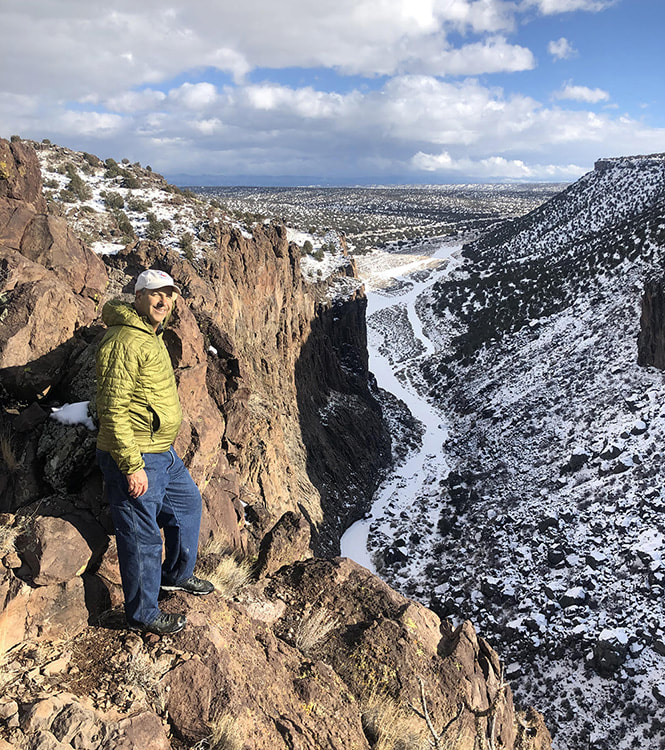


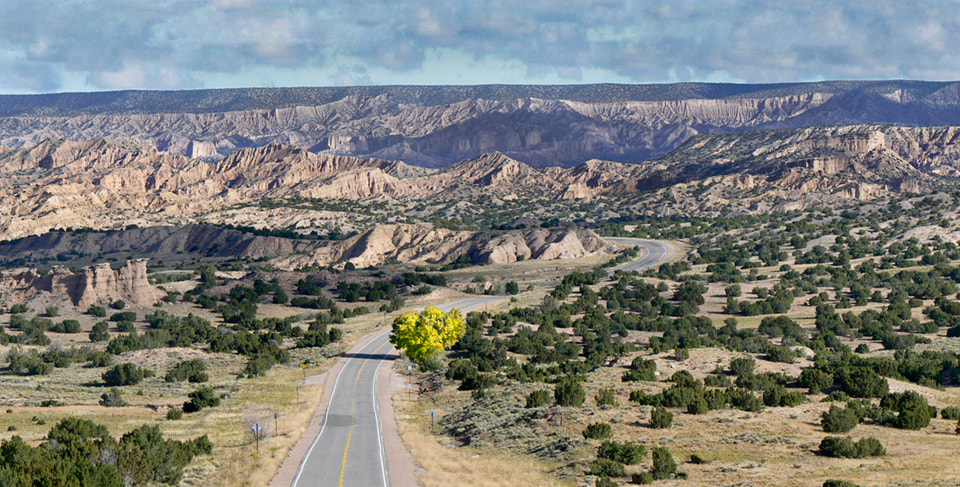


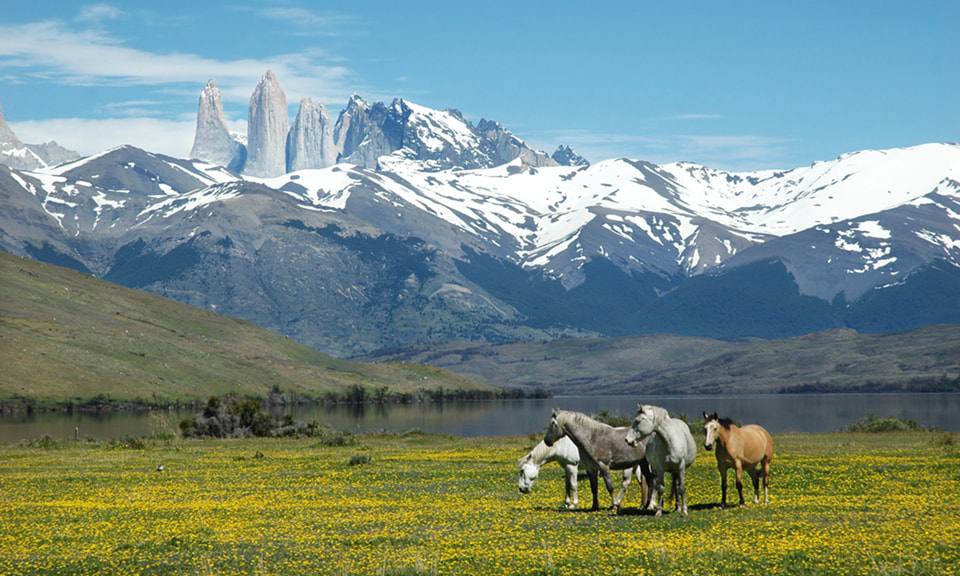
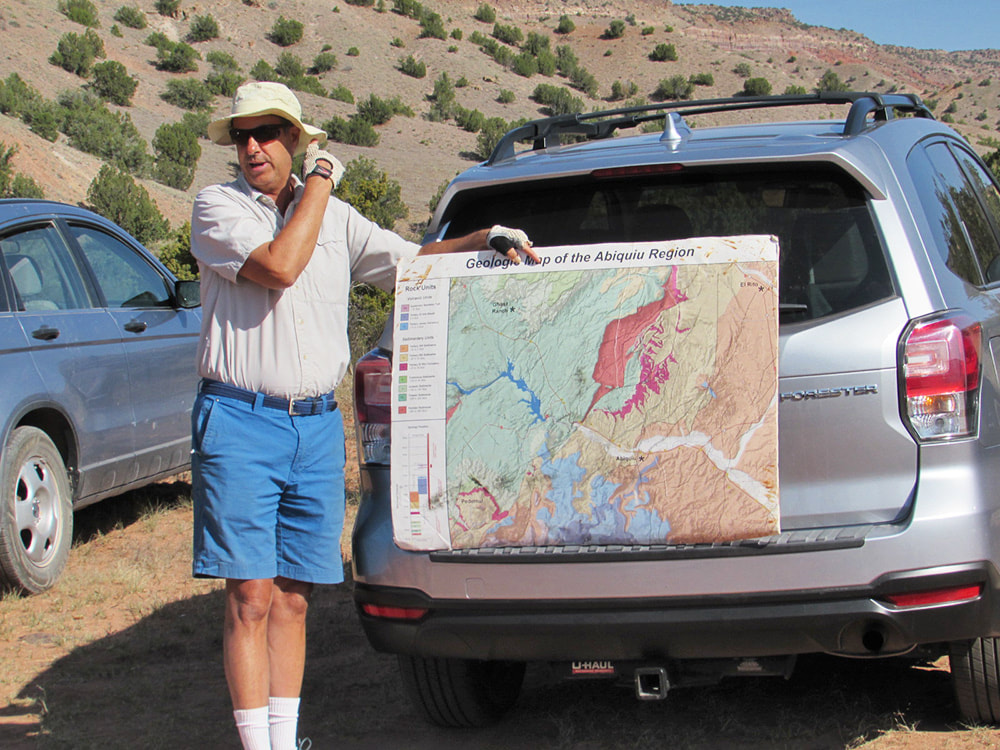
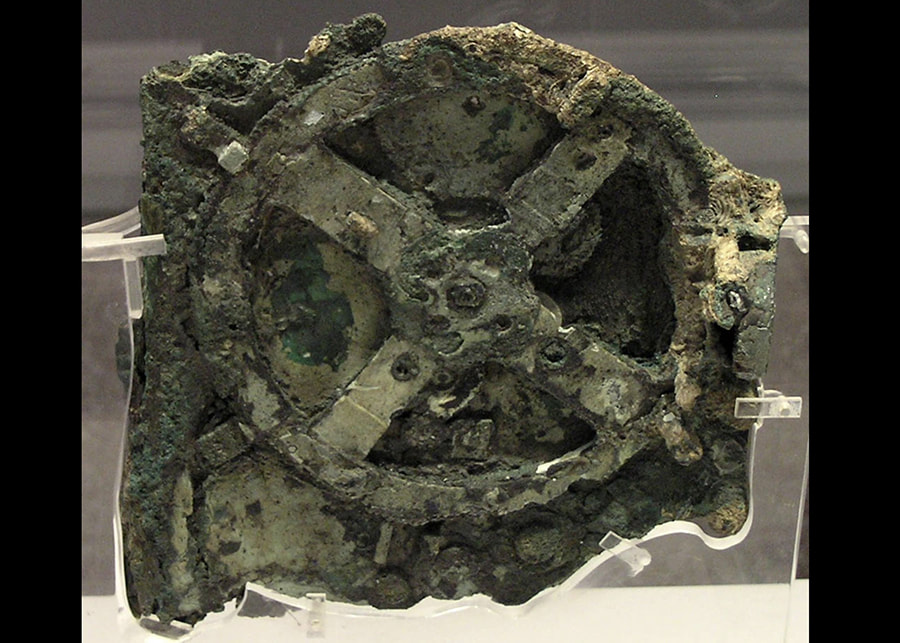
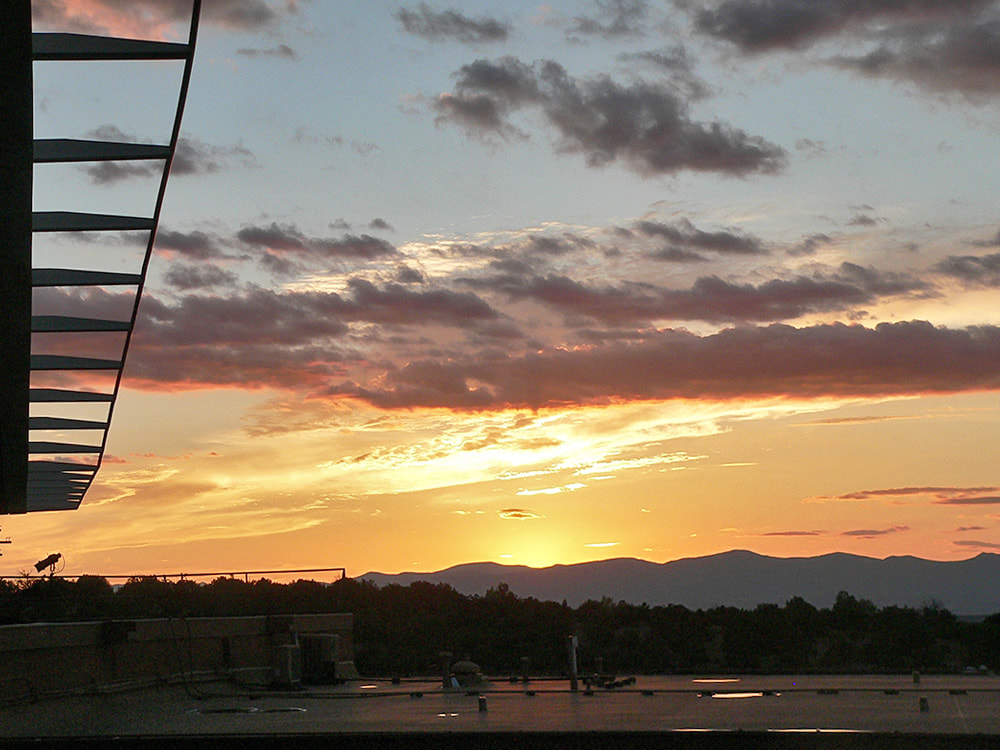
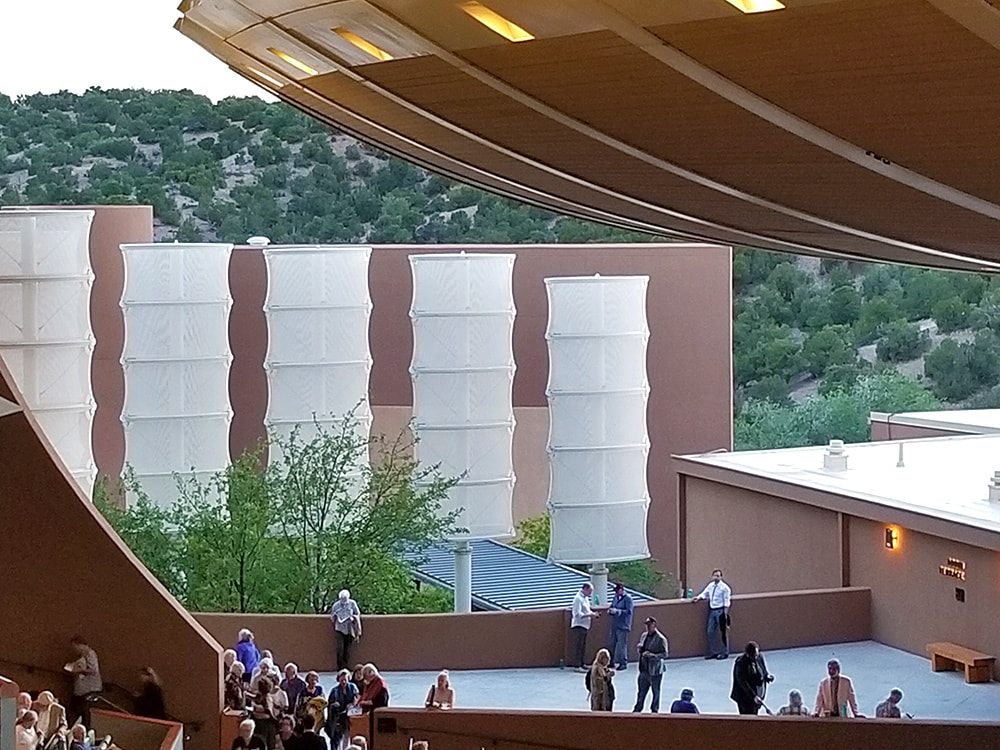
















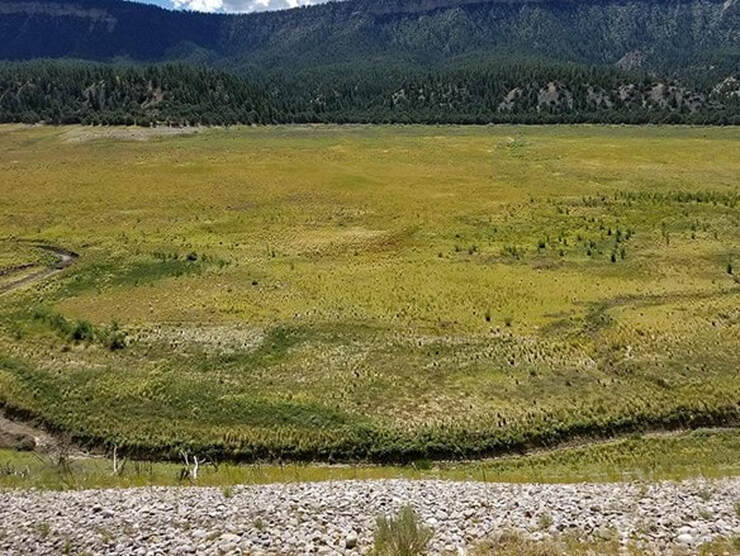




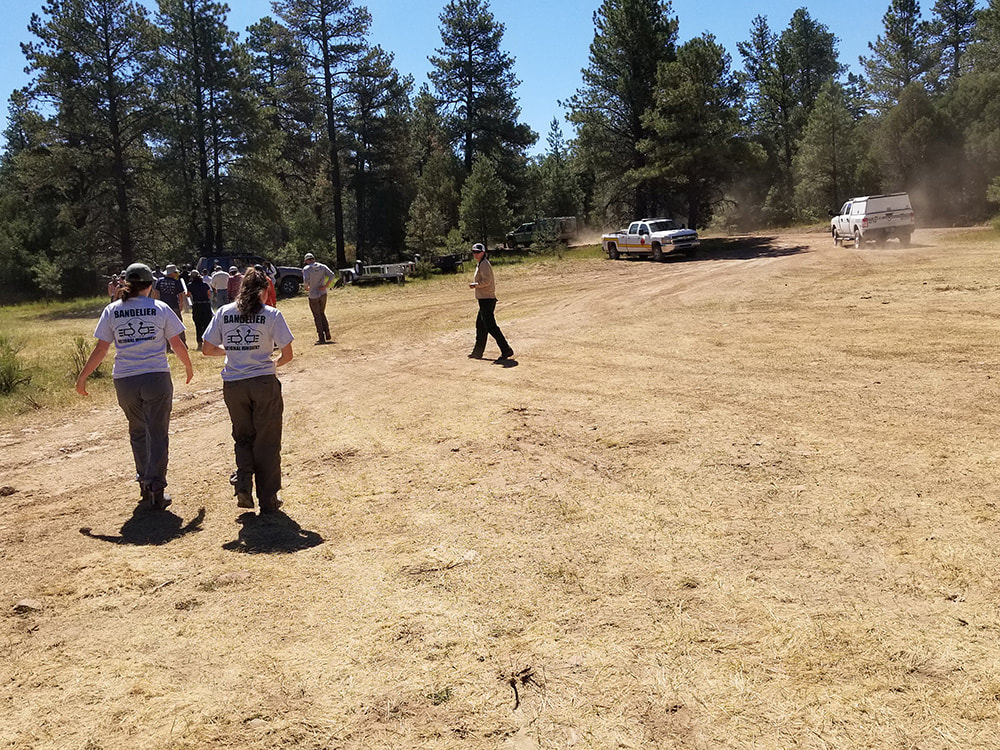

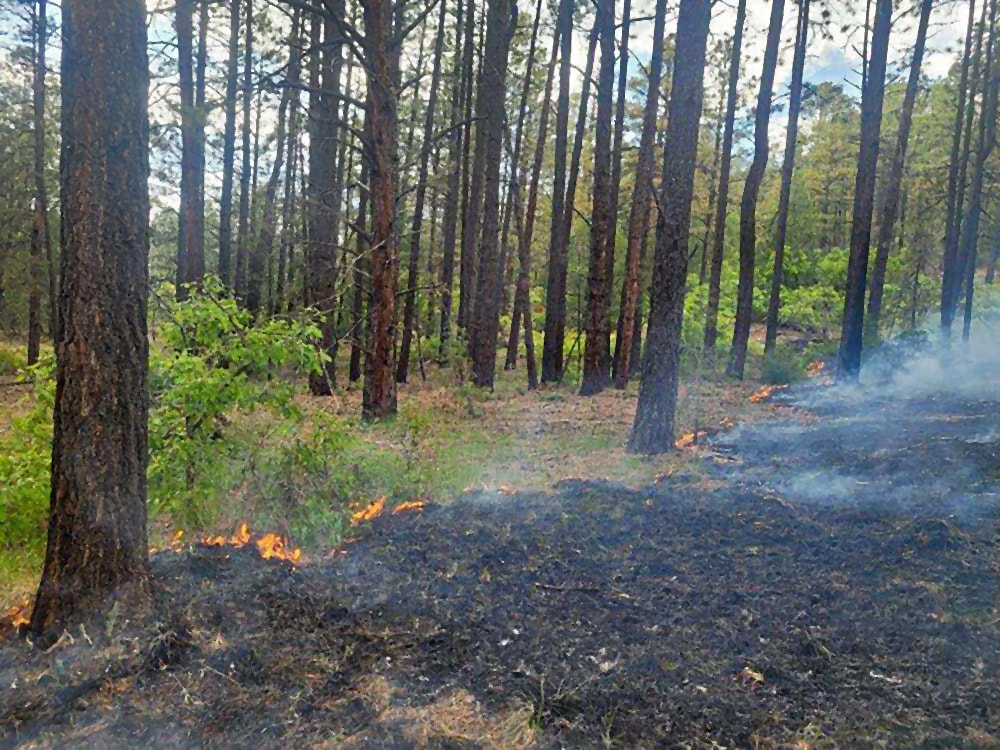

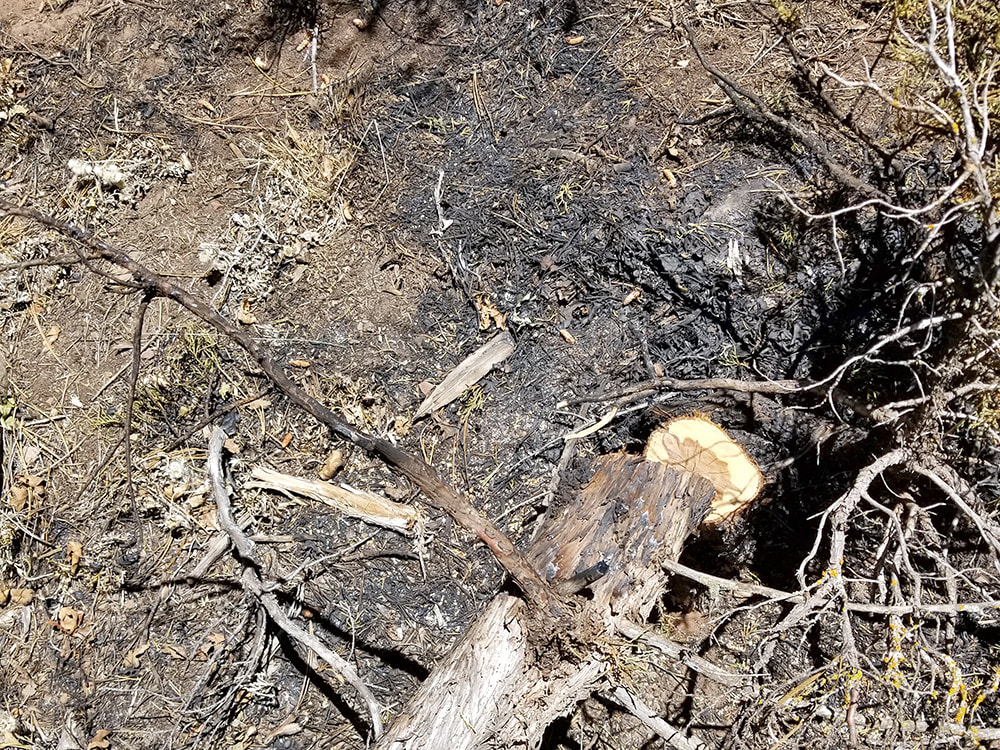
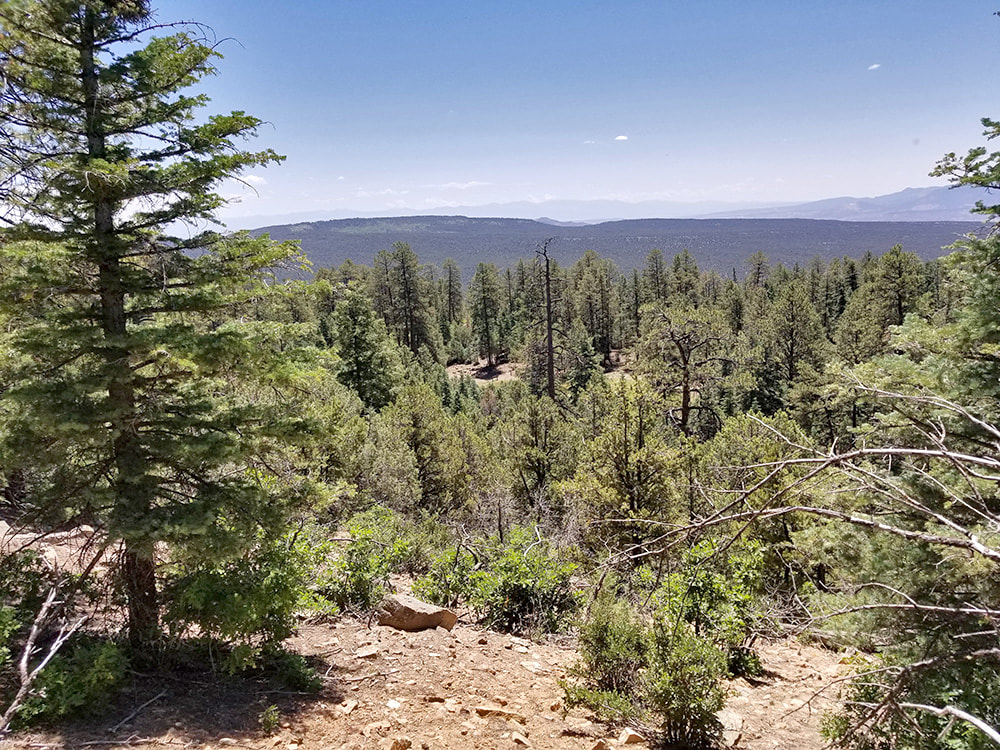
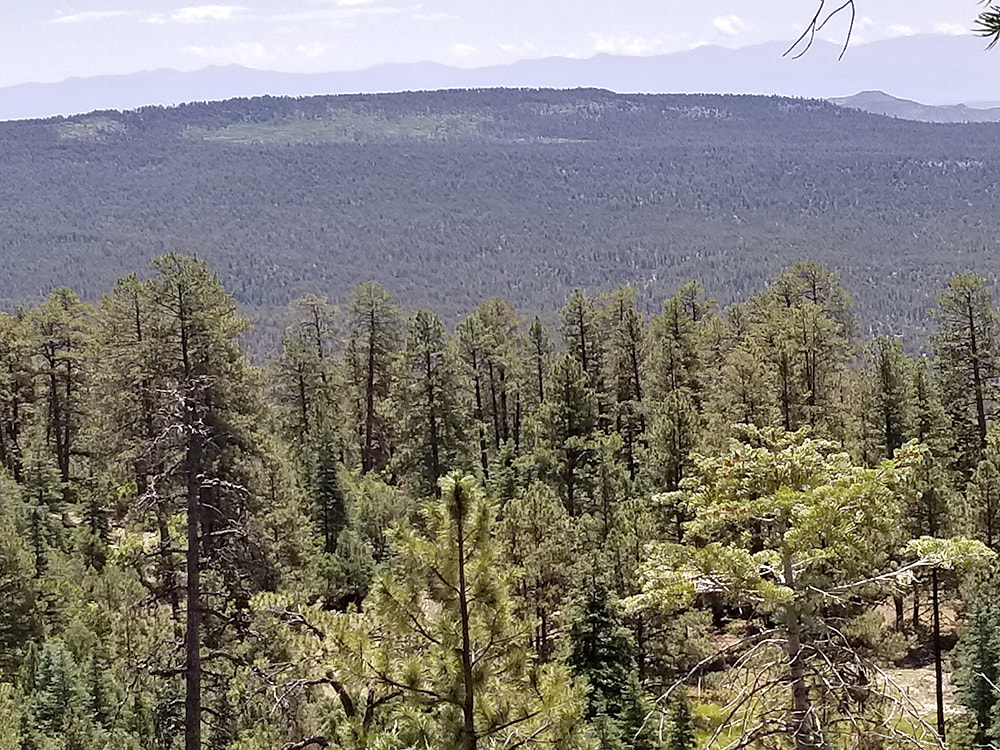
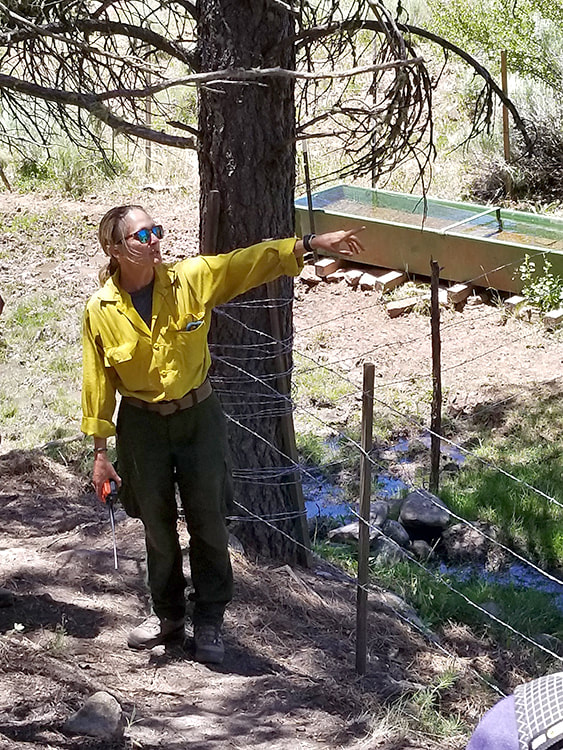


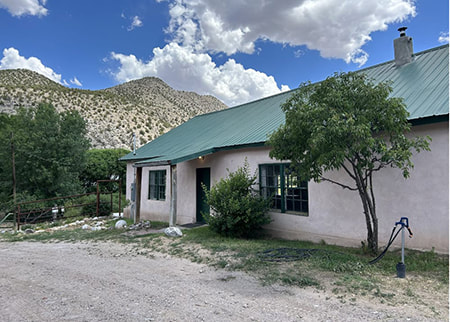
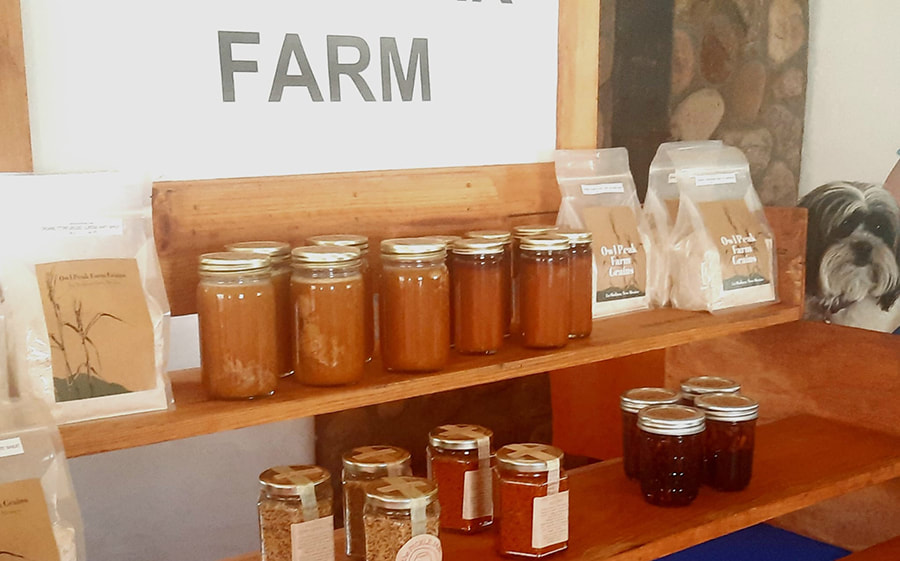
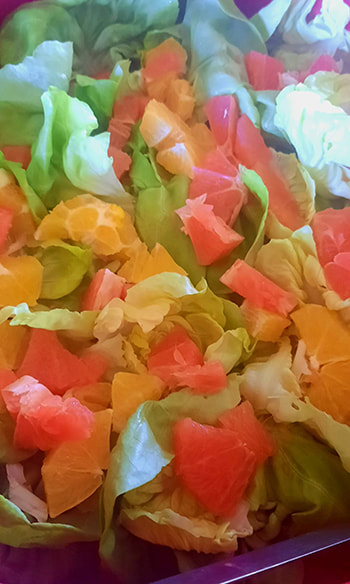

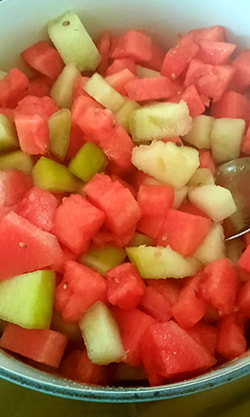


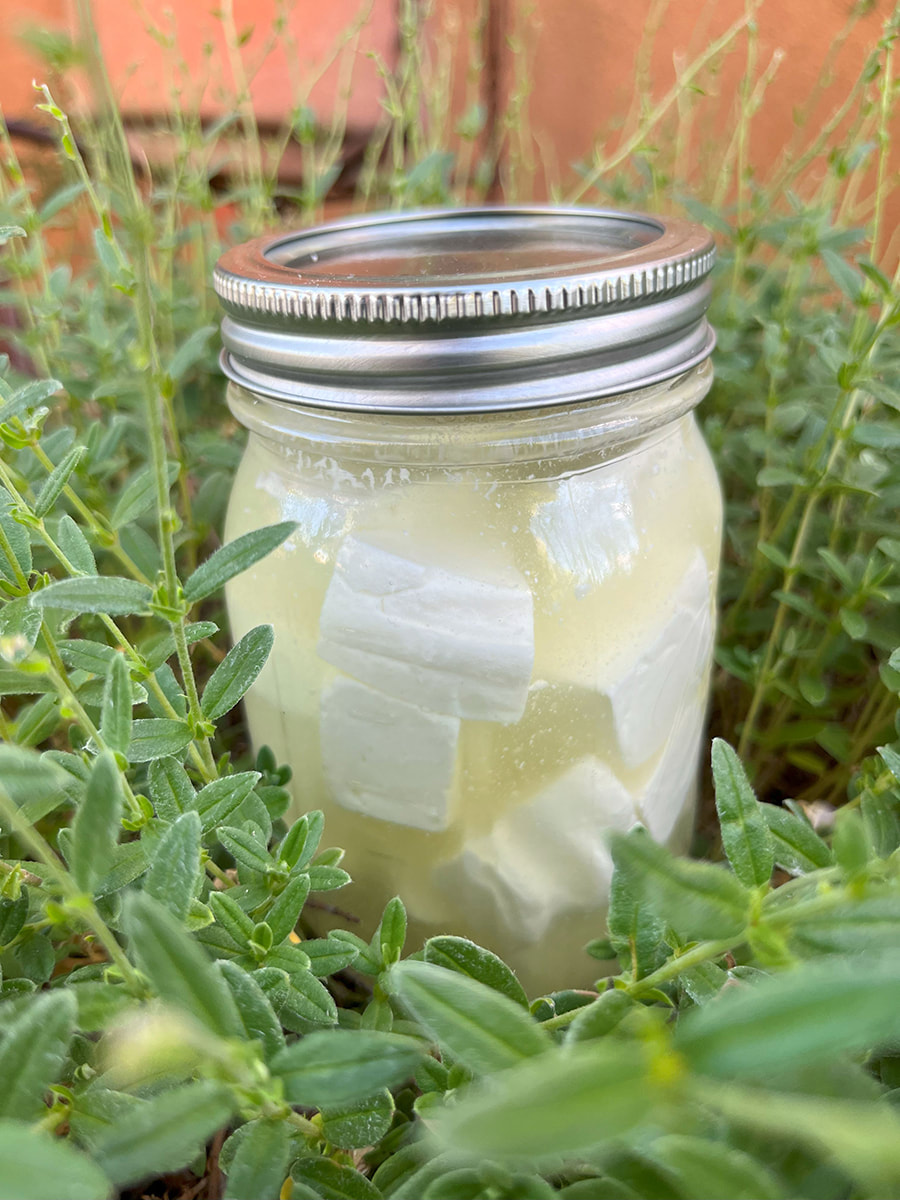







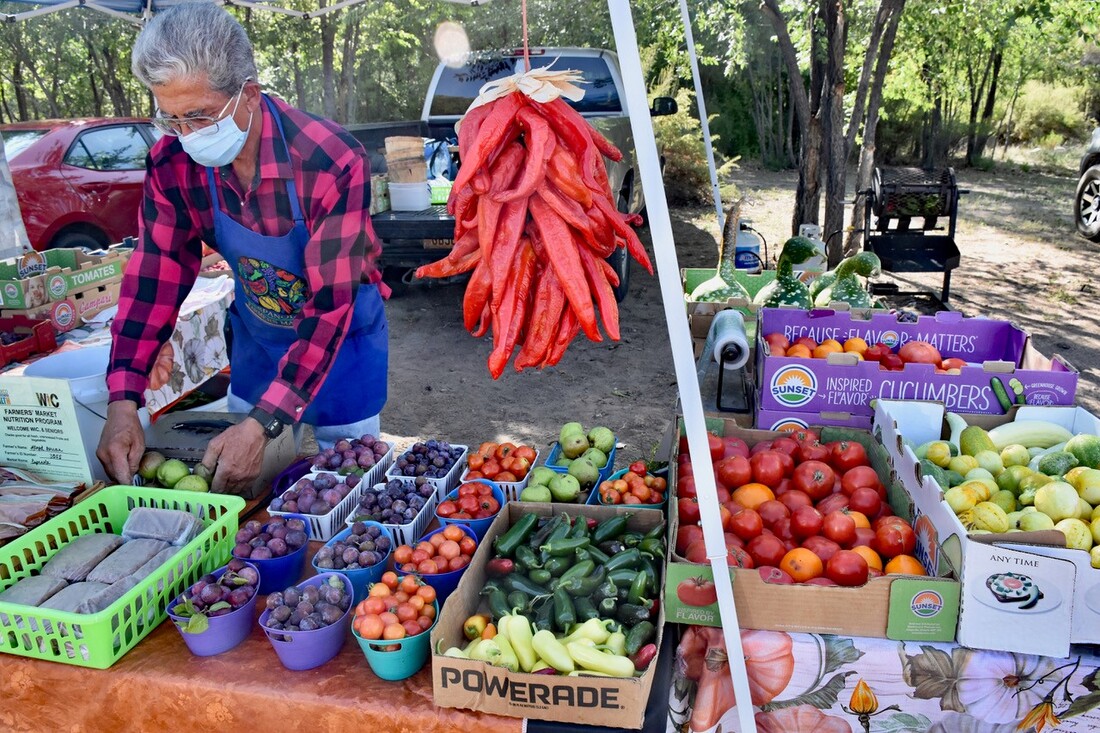
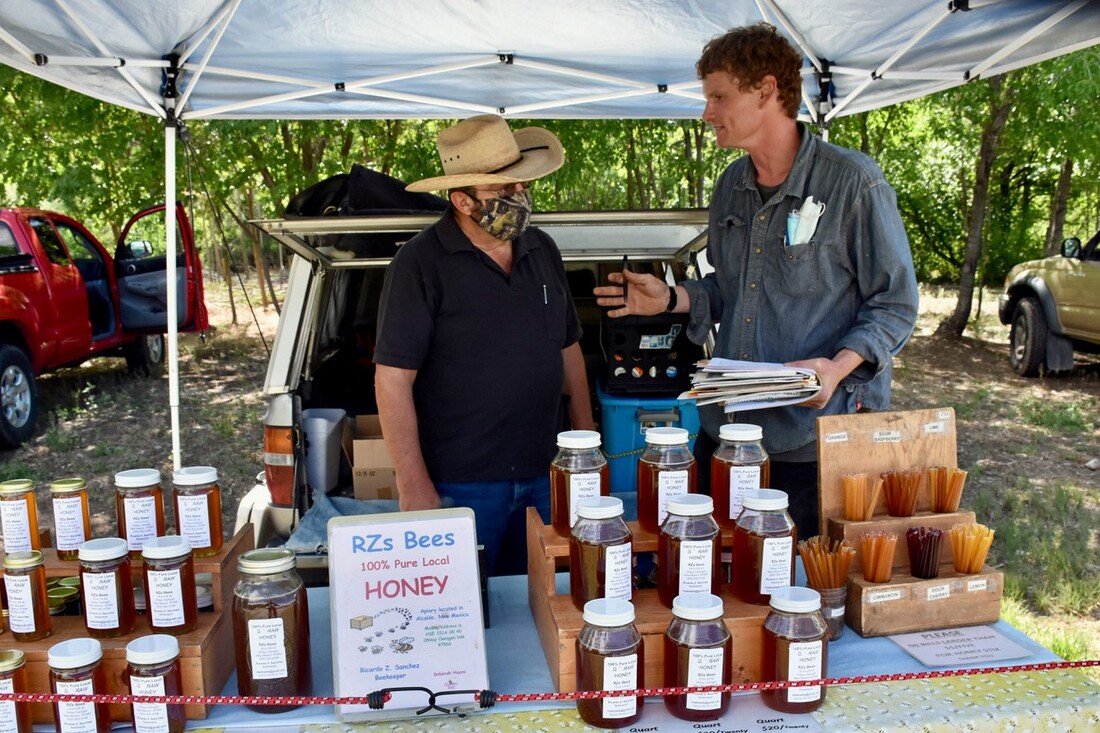
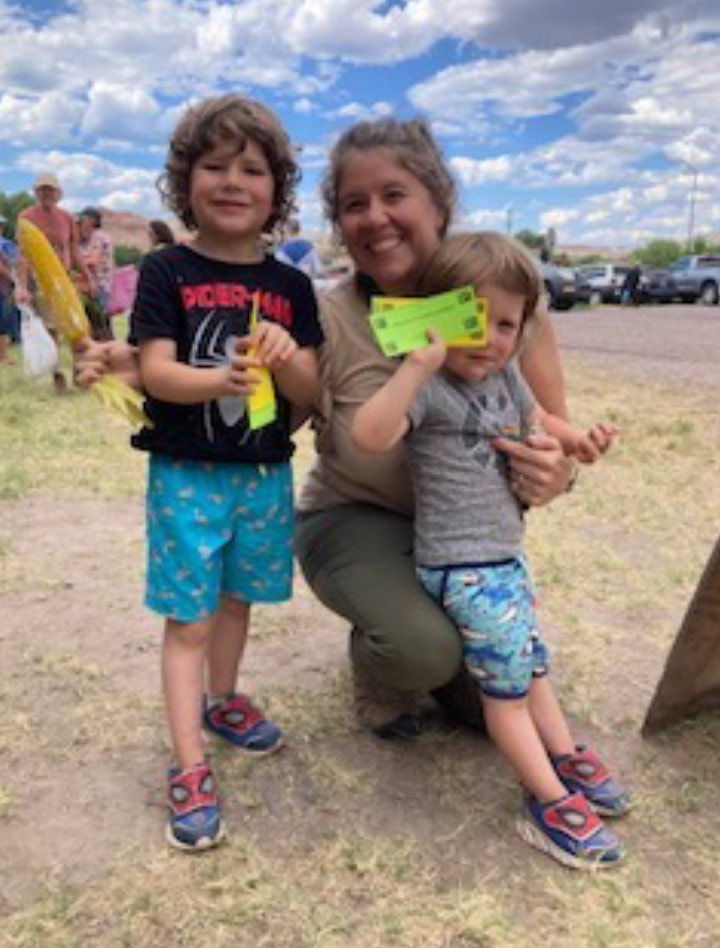
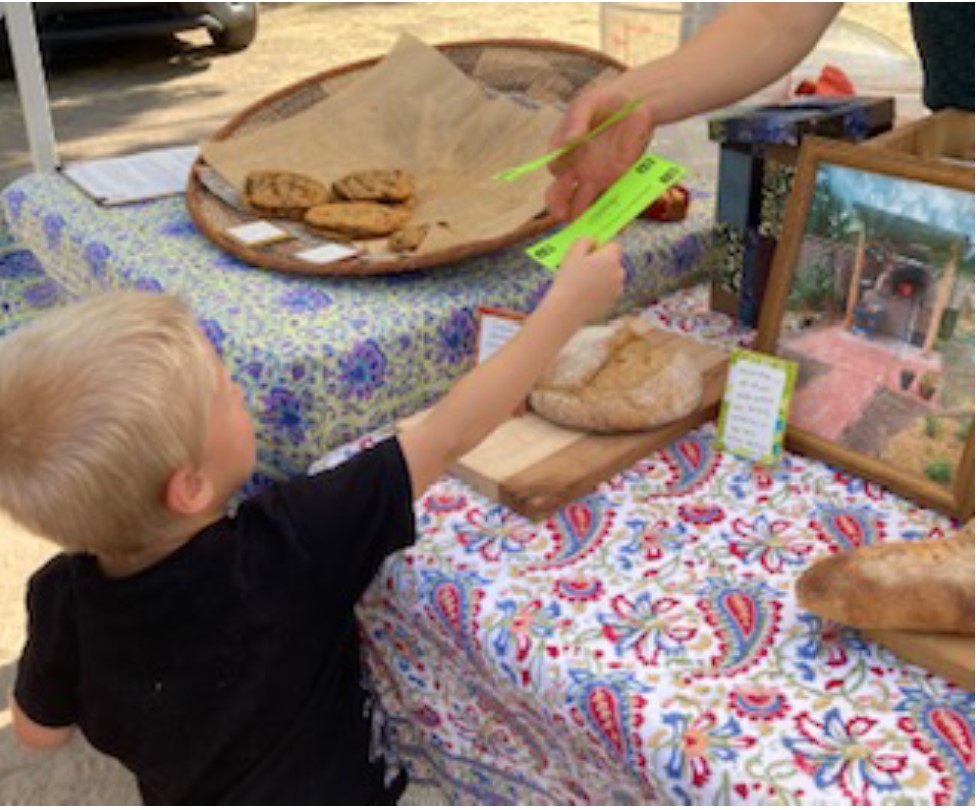
 RSS Feed
RSS Feed